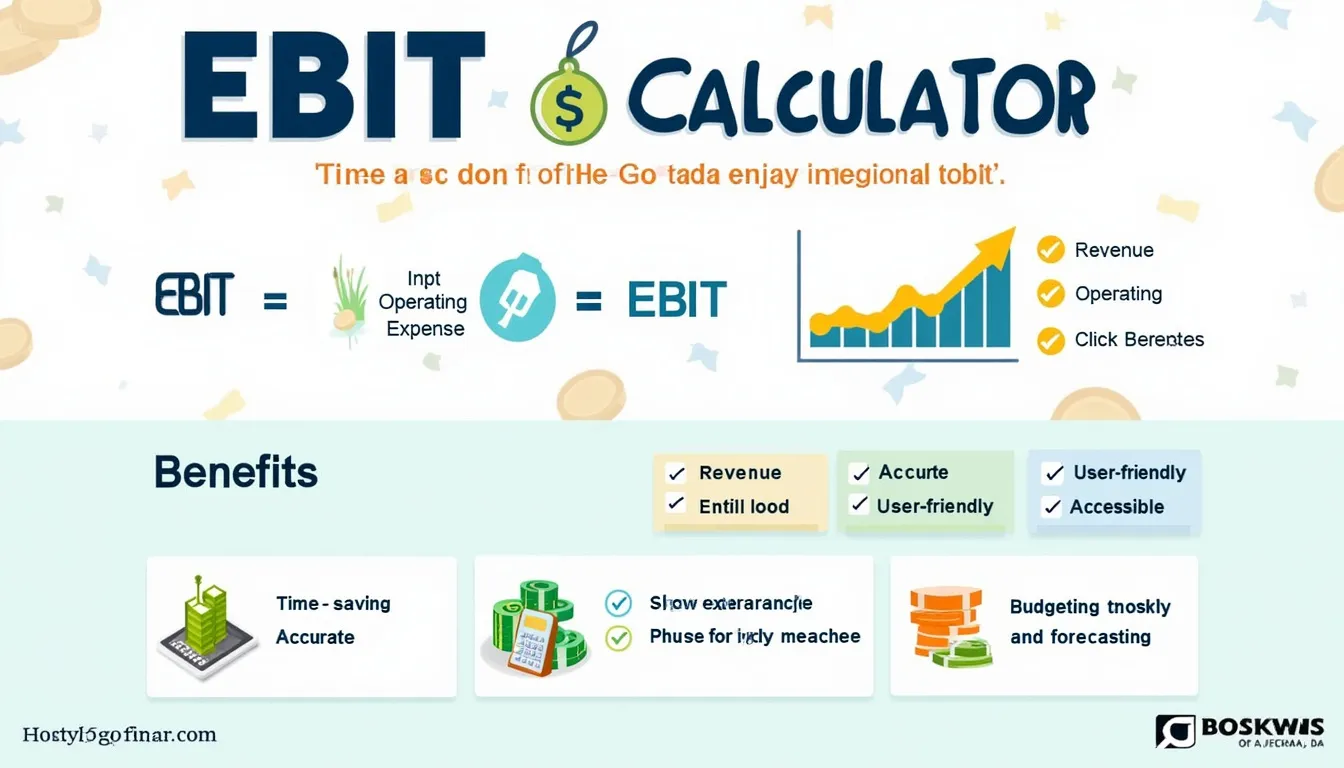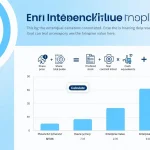EBITDA Calculator
Is this tool helpful?
How to use the tool
- Enter EBIT: Type your operating profit before interest and tax—e.g., $5,750,000 or $980,000.
- Add Depreciation: Input non-cash wear on equipment—e.g., $900,000 or $120,000.
- Add Amortization: Input intangible-asset expense—e.g., $220,000 or $35,000.
- Press “Calculate”: The calculator returns EBITDA instantly.
Formula
$$ \text{EBITDA}=EBIT+\text{Depreciation}+\text{Amortization} $$
Example A
- EBIT: $5,750,000
- Depreciation: $900,000
- Amortization: $220,000
$$ 5{,}750{,}000+900{,}000+220{,}000=6{,}870{,}000 $$
Example B
- EBIT: $980,000
- Depreciation: $120,000
- Amortization: $35,000
$$ 980{,}000+120{,}000+35{,}000=1{,}135{,}000 $$
Quick-Facts
- Median U.S. EBITDA margin for S&P 500 firms: 18 % (S&P Capital IQ, 2023).
- EV/EBITDA multiples in global M&A averaged 11.5× in 2022 (KPMG Deal Tracker, 2023).
- SEC asks public issuers to reconcile EBITDA to GAAP earnings under Regulation G (SEC, 2020).
- IAS 36 uses EBITDA-like “value in use” for impairment testing (IFRS Foundation, 2021).
FAQs
What is EBITDA?
EBITDA is earnings before interest, taxes, depreciation, and amortization, highlighting operating cash potential (Investopedia, https://www.investopedia.com/terms/e/ebitda.asp).
Why choose EBITDA over net income?
EBITDA strips out financing and accounting choices, enabling cleaner peer comparisons (Morningstar Equity Research, 2022).
How do I read a negative EBITDA?
Negative EBITDA signals core operations are loss-making and may require restructuring (Moody’s Corporate Methodology, 2022).
What counts as a healthy EBITDA margin?
Many analysts flag 10-20 % as sustainable for mature firms (Deloitte Industry Benchmarks, 2023).
How does EBITDA assist valuation?
Buyers multiply EBITDA by industry multiples to estimate enterprise value (PwC Valuation Handbook, 2023).
Is EBITDA a GAAP metric?
No. “EBITDA is a non-GAAP measure requiring reconciliation” (SEC Regulation G, 2020).
How often should startups track EBITDA?
Monthly tracking catches runway issues early, advises Y Combinator’s finance guide (Y Combinator Library, 2022).
What are EBITDA’s main limitations?
It ignores capital spending, working-capital swings, and debt costs, masking liquidity risk (IMF Fiscal Monitor, 2021).
Important Disclaimer
The calculations, results, and content provided by our tools are not guaranteed to be accurate, complete, or reliable. Users are responsible for verifying and interpreting the results. Our content and tools may contain errors, biases, or inconsistencies. Do not enter personal data, sensitive information, or personally identifiable information in our web forms or tools. Such data entry violates our terms of service and may result in unauthorized disclosure to third parties. We reserve the right to save inputs and outputs from our tools for the purposes of error debugging, bias identification, and performance improvement. External companies providing AI models used in our tools may also save and process data in accordance with their own policies. By using our tools, you consent to this data collection and processing. We reserve the right to limit the usage of our tools based on current usability factors.







